Home »
New price lists for the Ford Transit Custom MS-RT reveal that the starting price for the pimped up van will begin at £49,550 excluding VAT.
The entry-level MS-RT Transit Custom is the 2-litre Ecoblue 150PS model with a 6-speed manual gearbox in L1H1 size. The entry-level price for the Transit Custom MS-RT is £49,550 without VAT rising to £59,460 with the VAT and a final VAT inclusive on the road price of £61,607 inc VAT.
The new 8-speed automatic gearbox adds £2,150 to the base price, although that does include a bump in power to the 170PS version.
Plug-in hybrid PHEV models will start at £52,580 ex VAT, using a 2.5-litre Duratec engine producing 232PS.
Also revealed is the price for the all-electric version of the E-Transit Custom MS-RT that will be Ford's most powerful van to-date. The E-Transit Custom MS-RT is priced from £60,490 for the 65kWh (usable) battery version producing a massive 210kW (282hp). The final on-the-road price takes the total to an eye-watering £74,400 - ouch!
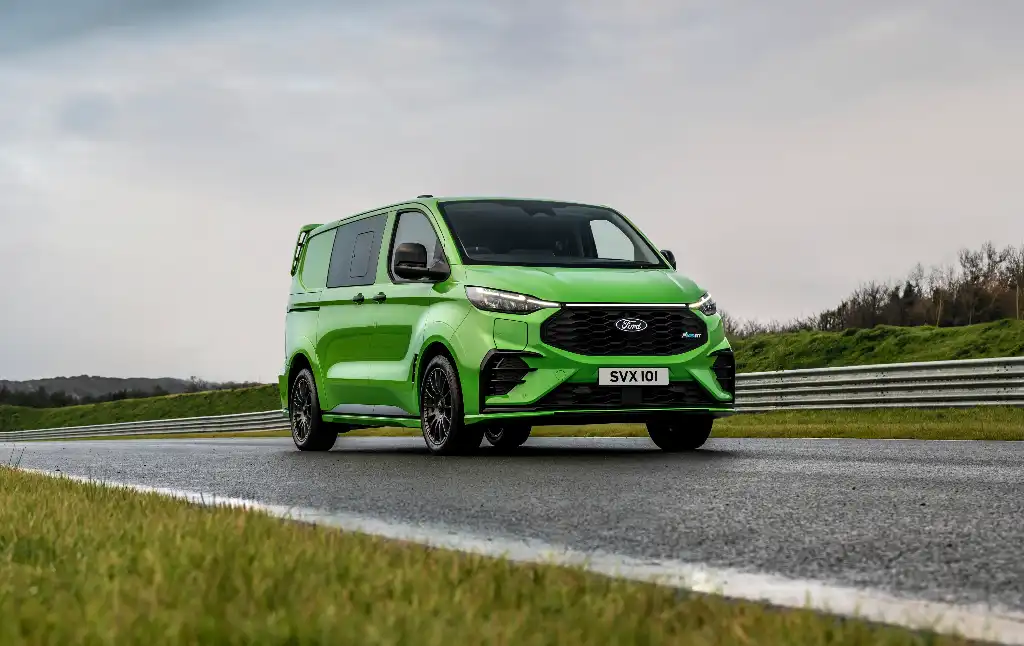
The sportiest version of the Ford Transit Custom will also be available as a long-wheelbase model with comes at an additional £700 premium for all models.
Unsurprisingly the most expensive van in the range is the long-wheelbase electric version which costs £61,190 ex VAT with an on-the-road price of £75,240 if you're paying the VAT.
In addition to the heavily revised body work that features an aerodynamic front bumper, side skirts, motorsport-inspired rear spoiler optimised for airflow and downforce, LED light strip between the headlights, wider wheelarches and special anthracite 19-inch alloy wheels, Transit Custom MS-RT models also get a unique interior.
The MS-RT Transit Custom interior gets sporty new front seats made from a non-animal Eco-Leather, along with a handful of MS-RT logos and snazzy blue stitching. To really make it stand out, it will also be available in signature MS-RT launch colours with vivid Yellow Green and MS-RT Blue.
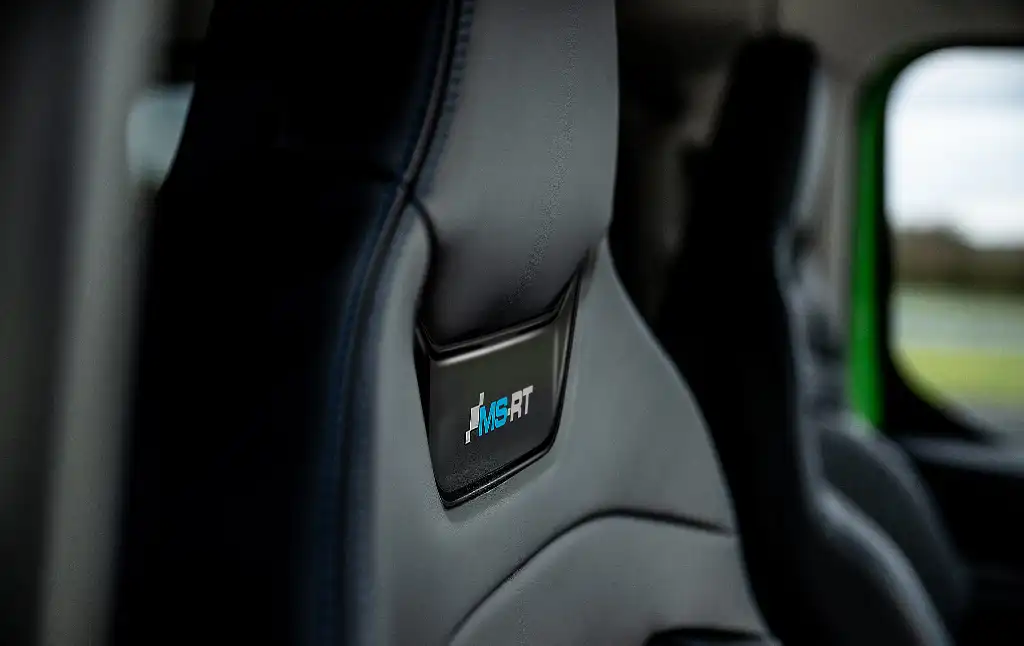

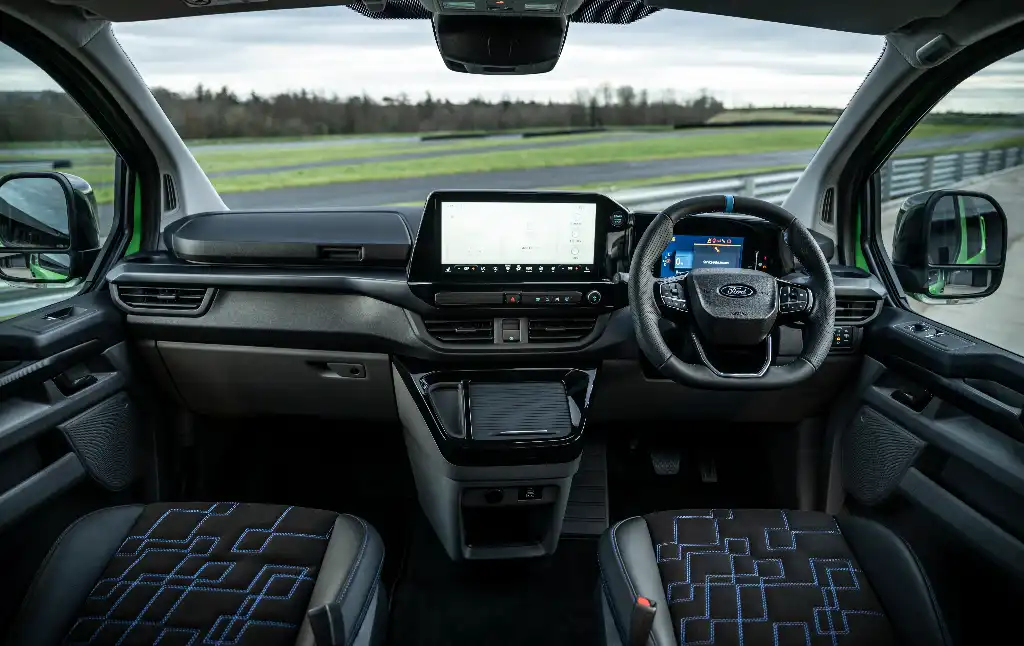
The Ford Transit Custom towing capacity is amongst the best in the medium van segment where the Transit Custom is the undeniable leader. Bought by UK van drivers in their thousands, the Transit Custom not only has a great ability to tow but is a comfortable, safe and economical van to be in.
The Ford Transit Custom towing capacity is up to 2.5-tonnes or 2,500kg. This is the total towing capacity for a Transit Custom with a braked trailer.
For an unbraked trailer is it also possible to tow up to 750kg with a Ford Transit Custom.
The Transit Custom towing capacity is what you would expect for a medium van and is an improvement over past versions which had a towing maximum of up to 2000kg. The improved 2,500kg towing capacity puts it at the top of the medium van segment along with rivals like the towing capacity of the Vauxhall Vivaro.
Each Ford Transit Custom van has the same towing capacity of 2.5-tonnes regardless of the model or engine power. Because there are 110hp, 136hp, 150hp or 170hp engines it’s important to consider that if you plan to tow a full trailer, or even a caravan, boat or car, using the Transit Custom it will be easier if you have the most powerful model.
Although simply saying that the Transit Custom can tow 2.5-tonnes makes it a nice and tidy answer, it’s not quite that simple.
Vans have a designated weight they are allowed to carry called the gross vehicle mass. This is the weight of the van (its kerb weight) plus the weight of any occupants or payloads.
There’s then the gross combination weight (GCW), also known as the gross train weight (GTW) which is the weight of the vehicle plus any load in the cargo area plus the weight of whatever you are towing.
The Ford Transit Custom towing limit is therefore the GCW which can be affected by the payload.
The Transit Custom has several permitted gross combination weights (GCW) ranging from 4,825kg to 5,725kg depending on the variants. A detailed breakdown of the GCWs is listed below which covers the engine size and gross vehicle weight (GVW) of the vans.
The GVW – which is the weight of the van plus the maximum payload – is limited to 3.2-tonnes, giving the Transit Custom a maximum GCW of 5,725kg. If you factor in the 3,225kg GVW you’ll see that 2.5-tonnes is the maximum possible towing weight for the trailer plus its payload. This means that even if fully loaded you won’t exceed the combined weights of the van plus trailer.
| Transit Custom GCW - Maximum (kg) | T280 | T300 | T320 |
|---|---|---|---|
| 2.0L TDCi Ford EcoBlue 110 PS (80 kW) | 4825 | 5025 | _ |
| 2.0L TDCi Ford EcoBlue 136 PS (100 kW) | 5325 | 5525 | 5725 |
| 2.0L TDCi Ford EcoBlue 136 PS (100 kW) 8-speed automatic | 5325 | 5525 | 5725 |
| 2.0L TDCi Ford EcoBlue 150 PS (110 kW) | _ | 5525 | 5725 |
| 2.0L TDCi Ford EcoBlue 170 PS (125 kW) 8-speed automatic | _ | 5525 | 5725 |
But you can see that if you have a Transit Custom 300 with a 110hp engine that allowance is drastically reduced. Here the 5025kg GCW and the 3025kg GVW of the Transit Custom means that there is just a 2-tonne towing capacity, if the van is fully laden.
Our advice is to consult the weight plates for the vehicle towing capacity and the Ford Transit Custom payload. These will usually be found inside the door frames – usually the passenger side – or under the bonnet.
The Transit Custom doesn't come with a tow bar as standard, but there is an option for it in the lengthy list of extras. A fixed tow bar can be specified for towing large items of up to 2.5 tonnes. The optional tow bar is designed to be fully compatible with the vehicle’s electrical system with a 13-pin connection to enable brake lights linked to the van to be shown on a trailer.
Prices for the tow bar and electrics are, at the time of writing, listed at £430 while a retractable tow bar for the Transit Custom is £550 (ex VAT).
Ford has revealed the first pictures and details of the eagerly anticipated Ford Transit Custom MS-RT van.
MS-RT editions of the mid-size van are something of an icon in the range owing to the motorsport inspired looks of the vehicle.
Designed as a collaboration between Ford and M-Sport, the MS-RT Transit Custom is the most eye-catching van in the line-up, sitting above the Transit Custom Sport. It will be available as both a diesel and electric version.
The fully electric Ford E-Transit Custom MS-RT can lay claim to being the highest powered Ford Transit Custom to-date. It gets a 210kW (282hp) electric motor that powers the rear wheels. It gets selectable drive modes to tone down the power when not needed with a 160kW Normal mode and 100kW when in Eco mode.
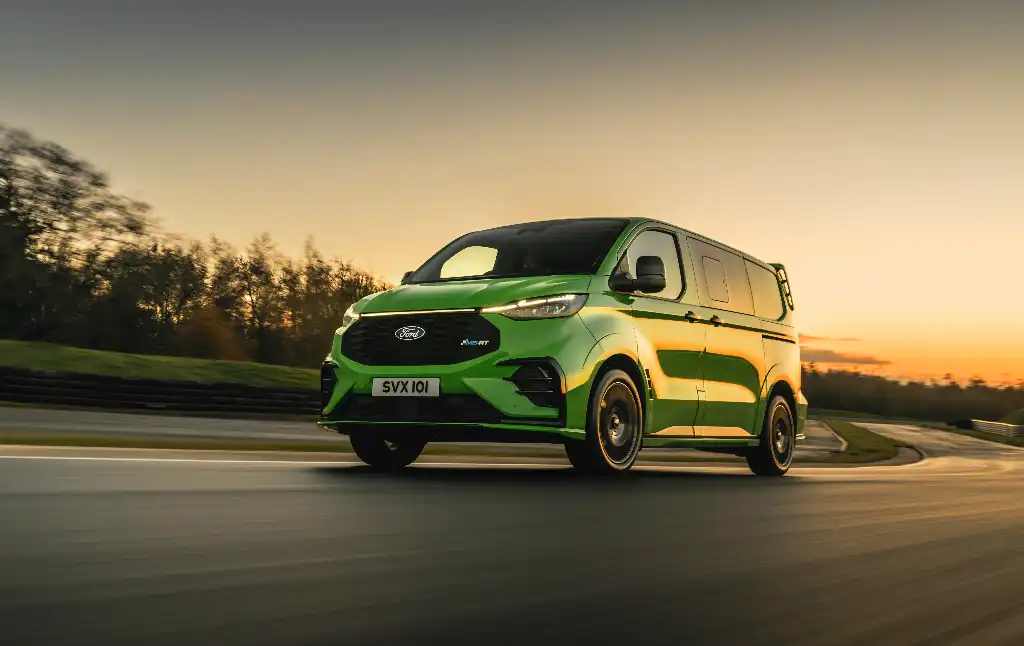
The diesel version of the MS-RT Transit Custom gets the standard 2-litre EcoBlue diesel engine. It remains unaltered from the standard van with a 168hp output and an eight-speed automatic gearbox. There’s optional all-wheel drive, or front-wheel drive. A 148hp version will also be available along with an MS-RT version of the recently revealed Transit Custom PHEV. That model has a 230hp plug-in hybrid powertrain that uses a 2.5-litre petrol engine and a 11.8kWh battery.
Of course, the Transit Custom MS-RT isn’t really about engines and power, it is about appearance. Its exterior styling is all about rally-inspired aggressiveness. It gets an aerodynamic front bumper with integrated spoiler, sports side skirts and a new sports rear quarter. This includes a bumper with integrated diffuser.

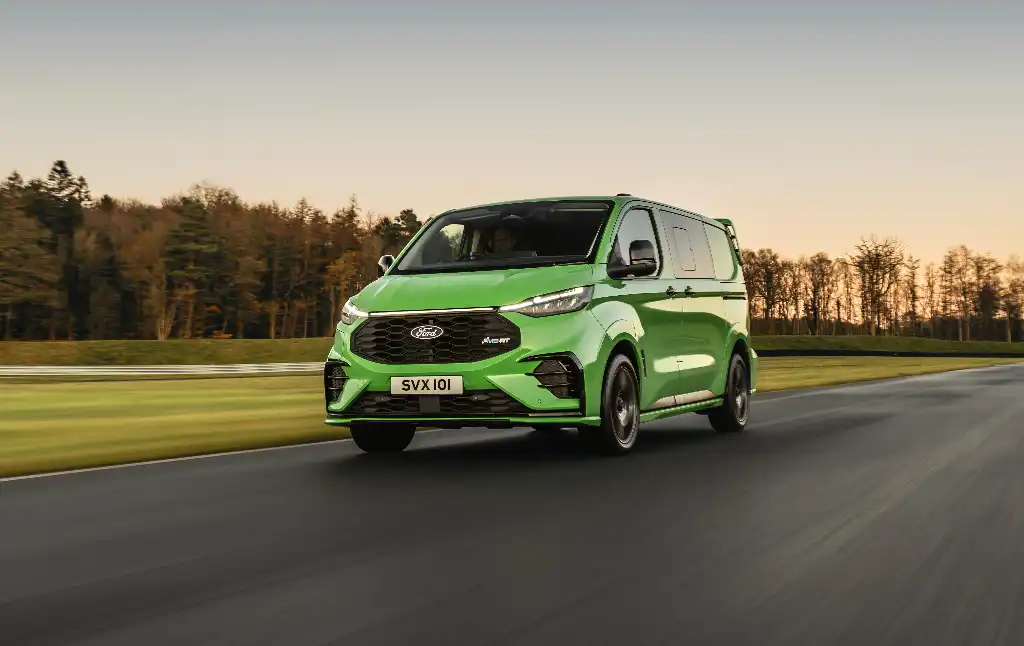
Naturally there’s a motorsport-inspired rear spoiler that has been optimised for airflow and plenty of downforce to keep the Transit Custom MS-RT and all your tools firmly stuck to the road. Electric van models will also get an additional LED light strip between the headlights.
Special anthracite 19-inch alloy wheels – which are a 0.5-inches wider than regular Transit Custom Sport wheels – sit beneath wider wheelarches. Each wheel is also more than 1kg lighter and comes with commercial-rated 235/45 R19 Goodyear Eagle Sport tyres.
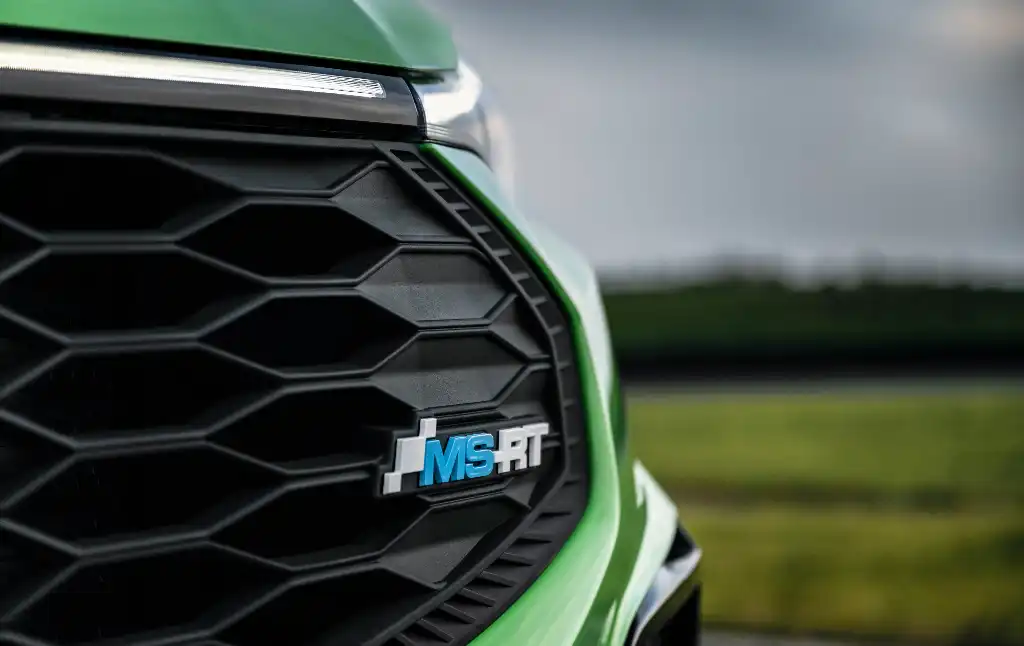
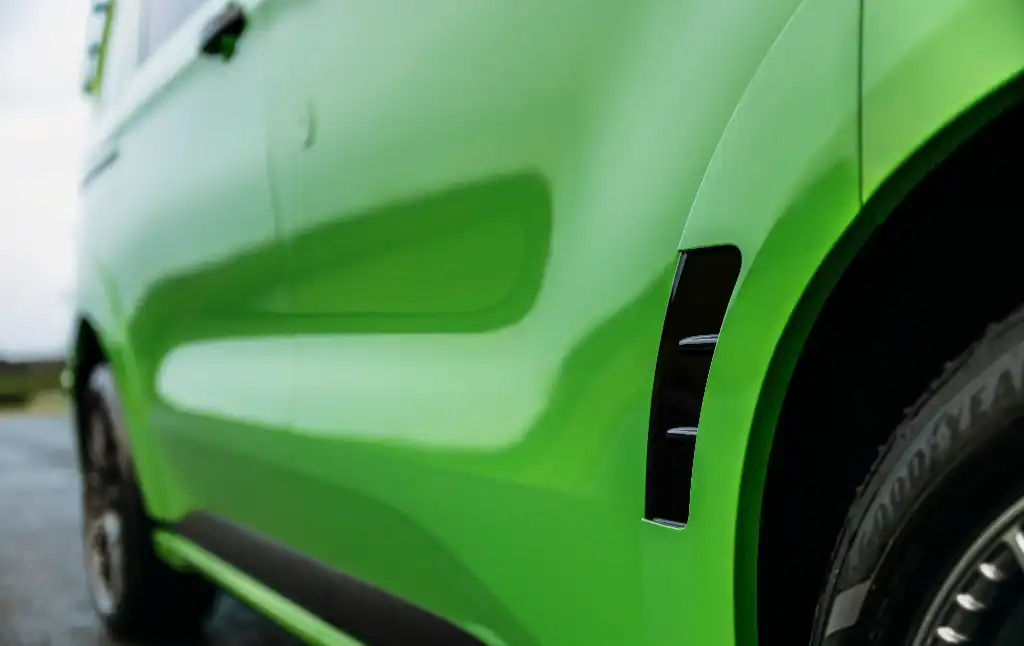
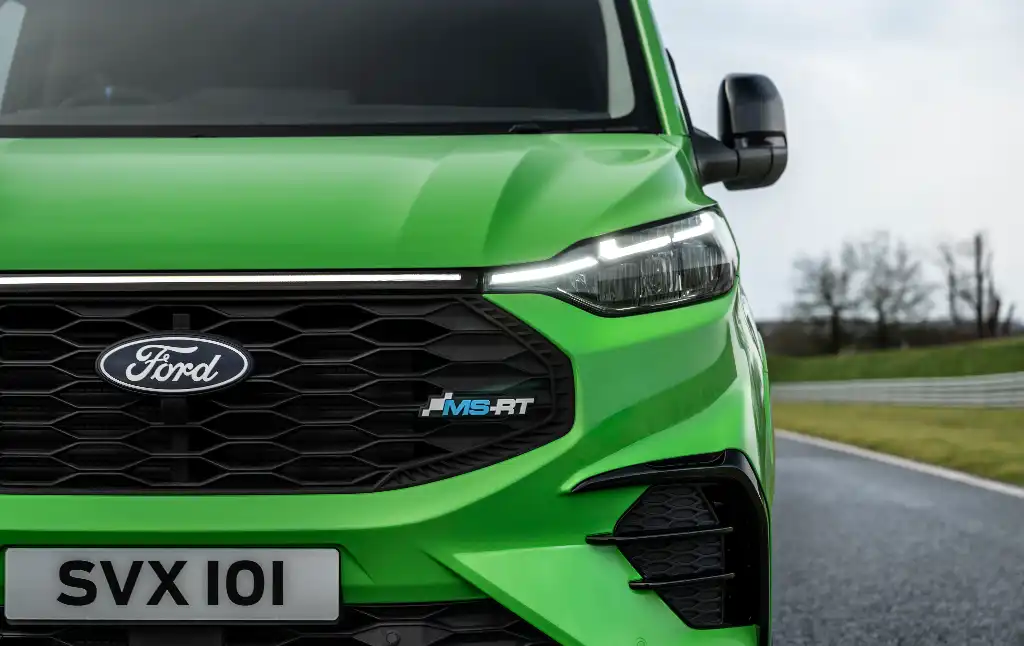
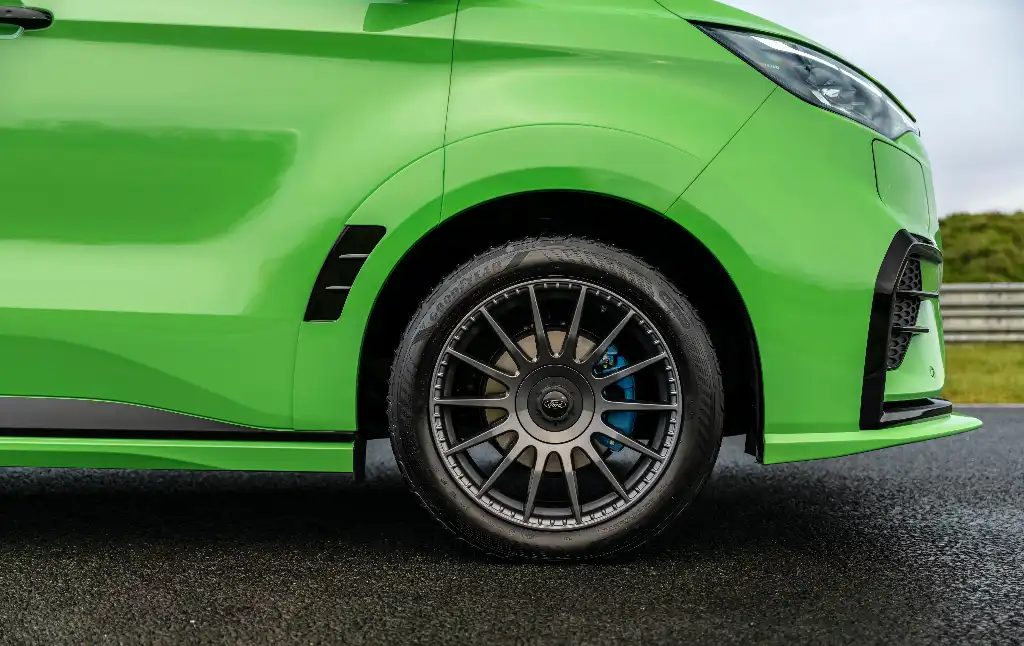
Despite all the upgrades, it’s still a proper working van and offers the full Ford Transit Custom dimensions of up to 6.8m3 maximum load space. The MS-RT Transit Custom payload is up to 1,124kg.
On the inside it gets sporty new front seats with non-animal Eco-Leather, suede, MS-RT logos and blue stitching. Signature MS-RT colours at launch will including vivid Yellow Green and MS-RT Blue. The van will also come with gloss black mirror caps and door handles as standard as well as MS-RT Blue painted brake callipers.
The Transit Custom MS-RT will be sold through Ford Pro dealers and undergoes final assembly and finishing at a dedicated new facility located on the Ford Dagenham Estate in the UK, right next to the HQ for Ford Pro’s engineering team.
Prices for the Ford Transit Custom MS-RT will start from £49,550 rising to more than £75,000 for the top spec electric version.
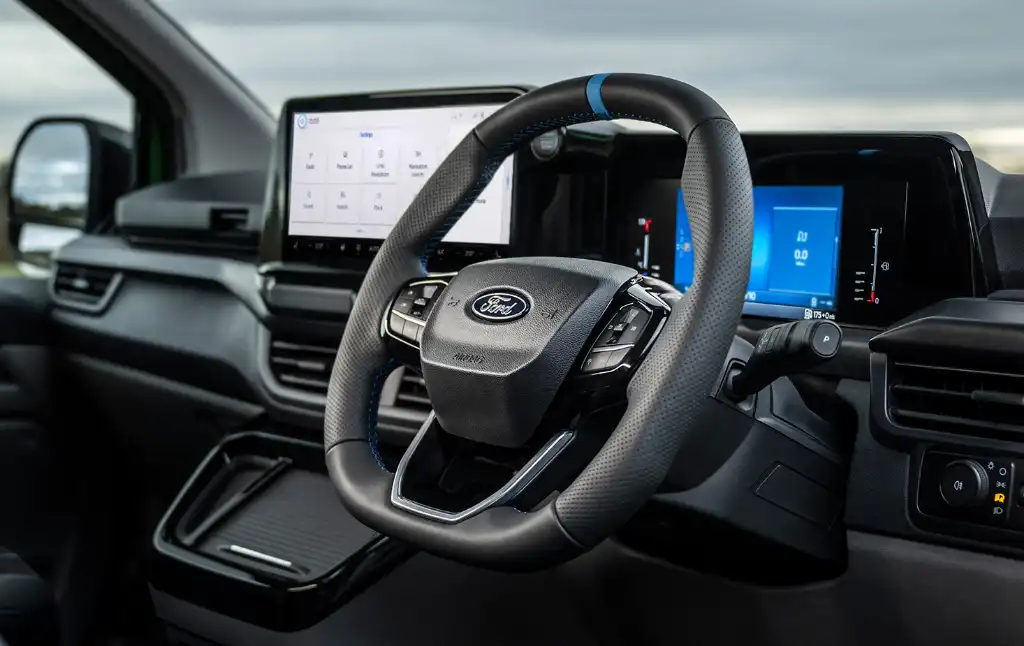

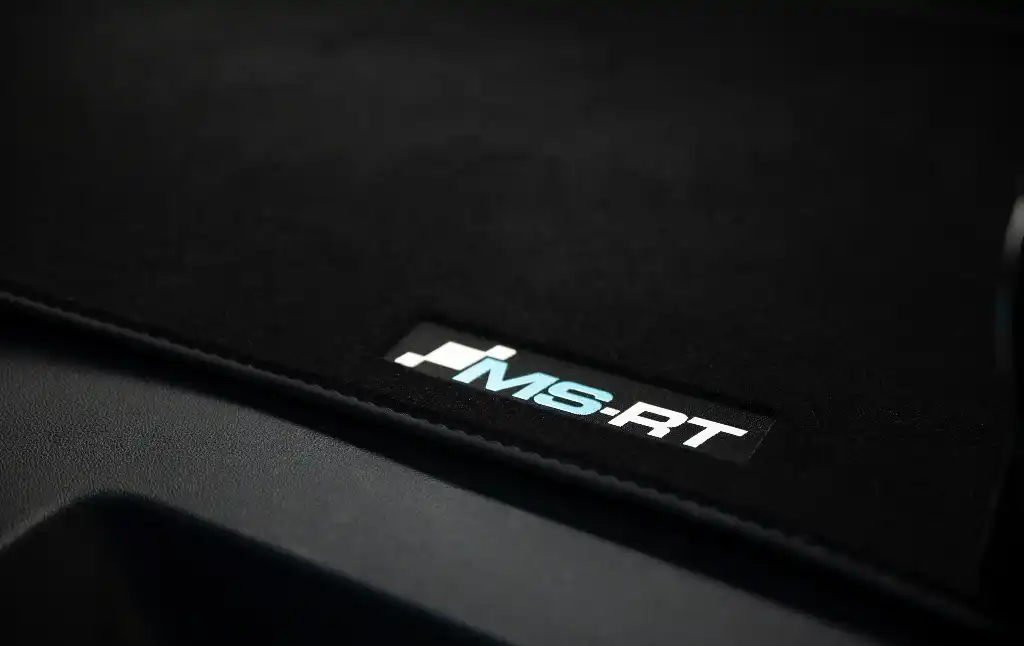
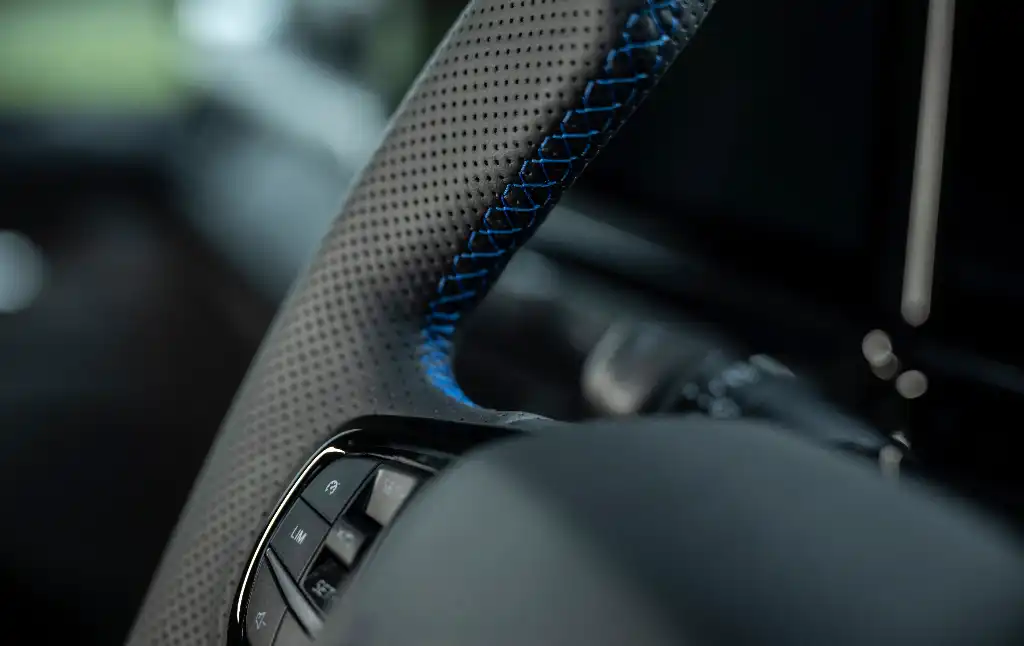


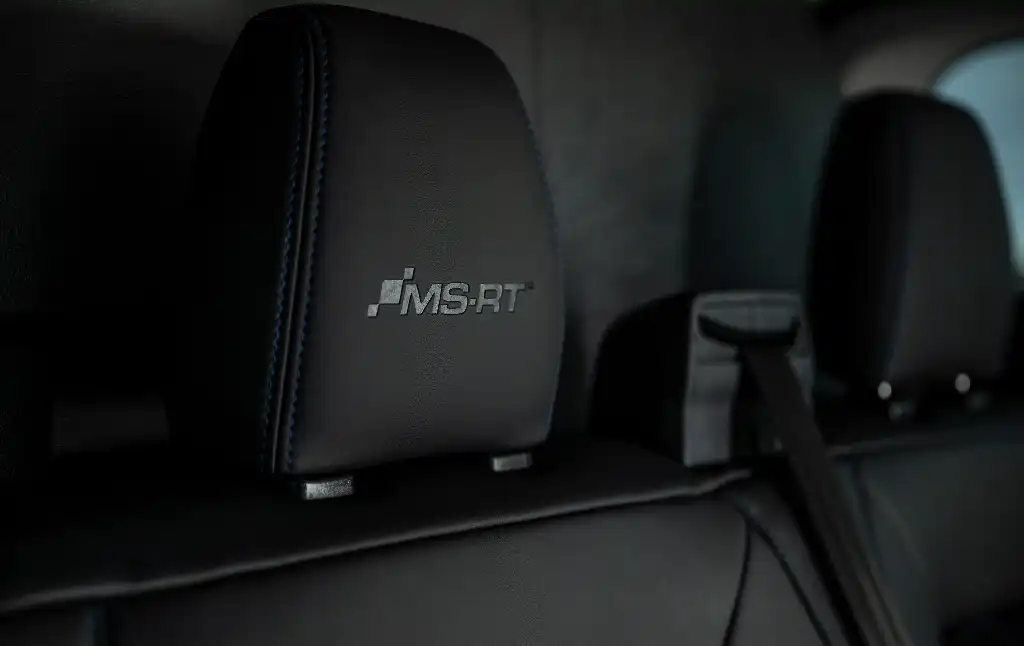
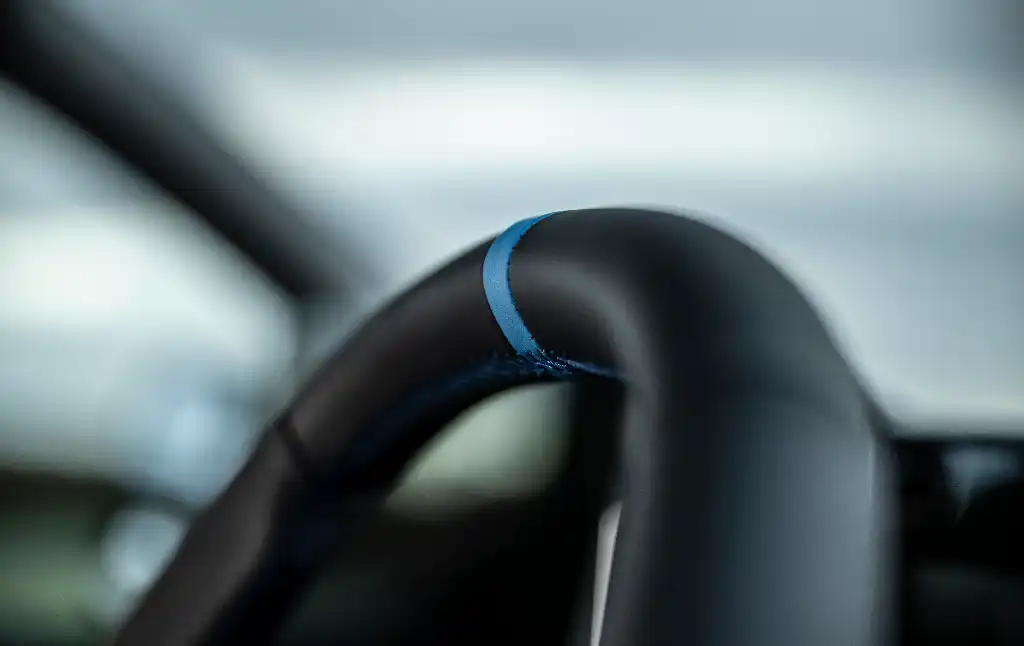
TVL Security has increased its offering for Ford vans with three new security device packs designed for added load security in Ford's latest light commercial vehicles.
Ford customers can choose from three additional TVL Security developed options, that include their SlamHandle, HookLock and ArmourShell packs.
TVL extends its working relationship with Ford which started back in 2018, and will supply the new security features on the recently revamped Ford Transit Custom van.
Ford Transit Custom vans can be factory-fitted with TVL Security equipment, speeding up the time it takes to get a van fully secured and on to the road. Their anti-pick cylinder RepLock – which prevents the driver’s door from being picked open- j has been available as a factory fit option since the partnership began.
The new options will include the following security packs:
For the first time, customers selecting the HookLock or ArmourShell packs will also be able to choose it they want the security features on the cabin or the load area individually. LatchShield, which was also previously only included with the SlamHandle pack, is now available on all packages along with LoomGaurd.
Two new matte-black lock escutcheon designs have also been developed, ensuring lock cylinders are flush to the cover regardless of whether the cylinder protrudes from the door skin.
TVL Security manufactures the products at its headquarters in Brentwood, Essex, where they are then shopped to the Ford assembly plant in Kocaeli, Turkey.
The Ford Transit Custom has won the International Van of the Year Award 2024, securing its fifth title and the most prestigious honour in the light commercial vehicle industry.
The jury of 24 members from leading commercial vehicle publications across Europe gave top marks to the latest Ford Transit Custom, ahead of the new Iveco eDaily which came in second and the Renault Trafic E-Tech in third place.
The other finalists included on the shortlist for the award were the HYVIA Master E-Tech, Mercedes-Benz eCitan and Vauxhall Vivaro-e Hydrogen, indicating the diversity and choice of drivetrains available in the light commercial vehicle sector.
“This is the fifth occasion that the Ford Transit has won IVOTY,” explained Jarlath Sweeney, chairman, IVOTY.
“First in 2001 and 2007 with the then all-encompassing model and soon after launching the new generation, stand alone, one-tonne variant, the Transit Custom secured the title in 2013 and again in 2020 and now for 2024,” he added.
Commenting prior to the IVOTY 2024 trophy presentation at the Solutrans 2023 exhibition at EuroExpo, Lyon, France, Hans Schep, Ford Pro Europe general manager said: “We are very proud that the IVOTY jury has bestowed this prestigious award on the all-new Transit Custom. As the leading one-tonne van of choice for European customers, the all-new Transit Custom has been designed and engineered to meet their wide-ranging needs. Along with our award-winning diesel, customers will soon also have the choice of electric and PHEV versions too. Every model is packed with innovation and superfast connectivity to Ford Pro’s uptime, charging and productivity software ecosystem to help our customers’ businesses thrive.”
Also recognised at the Solutrans event were the Ford Ranger and Volkswagen Amarok. The co-developed pick-up trucks were named winner of the International Pick-Up Award, beating the Ford Ranger Raptor and Toyota Hilux GR Sport II.
In recent years, vans have been moving increasingly upmarket. The often-crude slab-like styling of yesteryear has gradually been replaced and seen van bodies evolve in to a more sophisticated car-like design, incorporating familiar shapes or grilles in to their new look.
Chrome, once the preserve of fancy high-end cars, is now prevalent on vans – or at least chrome-look plastics are – and leather can often be found on steering wheels and gear knobs. Vans are certainly moving up in specification, and that can largely be attributed to their desirability as people movers. As the demand for 4x4s blossomed in passenger cars, larger family-focused vehicles got neglected, leaving a gap large enough for a van to sneak through. Volkswagen’s Transporter has always been successful as a people mover, but Mercedes-Benz has also tried to muscle in on the action with a slicker, more appealing version of the Vito. When the Transit Custom was launched in 2012, it was clear that as much emphasis was placed on the importance of the Tourneo Custom passenger version as it was on the panel van. Vans or van chassis, particularly mid-sized ones, had suddenly become viable family runabouts and manufacturers needed to cater for their new customers’ more car-like expectations.
Enter the super-specced van. A commercial vehicle rammed full of all the gadgets your average car buyer would expect, from parking sensors to cruise control, dual-zone climate control and heated seats; top of the range models suddenly filled the higher reaches of a van price list. While your average fleet driver is unlikely to ever find themselves in one of our assembled Volkswagen Transporter Highline, Mercedes-Benz Vito Sport or Ford Transit Custom Sportvan models, the more discerning owner-driver may well do. They may also see the benefit in choosing a combi version, allowing up to six seats as well as a loadspace – useful for both the day job and the family.
Gathered are the highest specification models currently available in Transporter, Vito and Transit Custom vans. Volkswagen will add a Transporter Sportline model to its range, and Mercedes are likely to produce a Vito Sport X, but for now these are the top of the range vans, and the ones that are most likely to lure in buyers wanting a more luxurious LCV.
How do they compare?
As range topping vans, two of which bear the word Sport in their title, you’d be forgiven for thinking that they might get some sort of a power boost. Unfortunately, these vans are all show and no go, with all of them receiving standard power units – albeit the most powerful versions available in their line-ups. That means the Transporter gets 178hp and 400Nm of torque from its 2-litre biturbo Euro-5 engine, the Vito develops 187hp and 440Nm of torque courtesy of its 2.2-litre Euro-6 engine and the Transit Custom pumps out just 168hp and 385Nm from its 2.2-litre Euro-5 power unit.
Standard equipment across the three vehicles is generous and includes air conditioning, Bluetooth and satellite navigation, but that is largely where the similarities end. Despite being the top of the range models, the level of finish and luxury in each varies massively.
The Vito gets acres of black plastic trim with black instruments and silver detailing. The effect is mixed, creating quite a classy look but with a slightly down market feel. From the darkness of the Vito, there is light relief in the VW Transporter with a combination of grey and black plastic trim making the cabin feel much brighter. The cabin of the new T6 model has been redesigned with the space in the dashboard on the passenger side now home to two shelves, rather than a lidded compartment that you get in passenger versions of the Transporter. Interior quality is generally high, and the small accents of chrome and piano black plastics help to break up the otherwise smooth and shiny surfaces.
Despite being the oldest interior of the three, the Transit Custom is probably not only the most pleasant to look at but also the most comfortable and ergonomic. Small details, like the rubber lined tray left of the steering wheel, and the excellently positioned and angled steering wheel controls, make the mid-sized Transit the easiest vehicle to adapt to. The leather trim on the seats and steering wheel also give a nice touch of luxury and the Transit is the only vehicle of the three where you really feel like you have taken a significant step up the pecking order by plumping for the most expensive version.
Why these three vans?
For these vans to really succeed they must be able to offer refinement not frequently found in LCVs. Ride comfort is of paramount importance in the passenger segment and these three are amongst the best in returning bounce free journeys, making them ideal for carrying people whilst also demonstrating sophistication expected from range topping vehicles.
Despite these three vans being at the top of their game, there is, however, still a noticeable difference between each. At slow speeds the Ford feels planted and assured, but as soon as you pick up the speed its ride becomes noticeably harsh and bumpy. The Mercedes strikes a fine balance and is smooth over all surfaces, but the Volkswagen just trumps its German rival thanks to its superior ride comfort when sitting in the second row of seats. Nevertheless, ride quality is just one factor in determining how premium a vehicle feels, as noise too plays a large part. Again here the Ford is probably bottom of the pile albeit closely matched by the Mercedes Vito. Both let in a surprising amount of engine noise into the cabin and suffer badly from tyre noise. In contrast, the Volkswagen is noticeably quieter not only than the competition, but over the previous generation van, and is certainly one of the largest areas of improvement in the new model.
While all three of these models will undoubtedly find their way on to numerous fleets as base models due to their total cost of ownership, owner-drivers, the typical customer for vans like these, are often more concerned with having a vehicle they can enjoy owning. Looks are subjective, so we’ll leave you to make up your own mind about which model you prefer – our testers’ opinions were split evenly between the three – but equally important as the way it looks is the way it drives. Not only are these three models the most luxurious in this weight category, they are also the three best handling vans at this size, yet they’re not free of their faults.
The Vito has long been the best handling van in the class, combining a well-balanced chassis with fast and responsive steering. The thicker than usual steering wheel makes the Merc feel like a more dynamic machine than perhaps it is, but it is fun and fast. Mercedes now offers two engines, with a 1.6-litre unit paired to front-wheel-drive models and a 2.2-litre engine matched to rear-wheel-drive models like our test vehicle. The former is borrowed from Renault and the latter Mercedes’ own design, but both are strong, torquey powertrains well matched to the Vito’s dynamics. Power delivery is better in the smaller unit, as it is a bit spikey in the larger engine, but across the range of diesel engines available in this sector these two are close to the top. The problem with the Vito comes when you need to stop. The brakes are soft, spongey and upon first depressing them in anger, pretty terrifying as little happens through the first 50% of pedal travel.
Volkswagen’s Transporter has no such braking problem and stops in a heartbeat. It also goes pretty quickly too, despite conceding nearly 10hp and 40Nm to the Vito, the Transporter feels like a more powerful machine and is helped by the super smooth and rapid shifts of the DSG gearbox fitted to our test van. Its weakness is its overly assisted and light steering, which sucks out too much feedback from the road and makes driving the Transporter rather uninspiring. We also found the seat to be the most uncomfortable of the three, with little support for the lower back and a flat base and seat back that more closely resembles a basic passenger bench seat.
With its bright red paint work and less than subtle black go-faster stripes, the Transit Custom’s appearance is writing cheques its engine can’t cash, at least on paper. Not only is the 168hp unit the least powerful of the three on test, it is only just the most powerful Custom in the range, 13hp more than the next most powerful unit, and with the same 385Nm of torque. It’s hardly groundbreaking stuff, yet the whole package in the Custom Sportvan is second to none. While there is a noticeable dead spot in the power band, requiring you to keep the engine revving nearer to 2,000rpm if you are to make progress at any decent rate, the weighty steering and smooth gearshift action let you feel like you are really driving the Transit with some meaning. The negative is that the engine is the least refined of the group, proving to be not only the noisiest on start-up, but also at motorway speeds.
Despite this, the Ford Transit is still the most enjoyable to drive and the easiest van to live with both long term or if you are just jumping in for a quick spin. A comfortable driving position is the easiest to set and forward visibility is also the best in the group.
When it comes to nifty features you would expect these top of the range vans to have a few tricks up their sleeves, but despite being top of the range models, a lot of the headline grabbing kit is actually available either as standard equipment or appears on other lower spec models. Value for money and Vito have rarely featured in the same sentence, and when it comes to equipment in this latest version the same is true with little in the way of gadgetry. A Becker sat-nav is standard on the Sport, but that aside we struggled to pick out noteworthy accessories. Attention Assist and Crosswind Assist are both decent standard safety features, but on a vehicle costing £27,500 you would think rear parking sensors would at least be standard.
The Transporter doesn’t contribute much more to the accessory battle but like the others has Bluetooth, DAB radio and navigation. It does, however, have rear parking sensors and is fitted with low rolling resistance tyres and a stop/start system as standard, while 17-inch alloy wheels are standard on this high-power model. Improving on the Tranasporter’s spec is the Transit Custom Sportvan, which gets front as well as rear sensors as standard, and what’s more the rear includes a nifty rear camera that is displayed in the rear-view mirror with parking assistance lines. Other features include heated driver and passenger seats, built-in satellite navigation and Sync voice dialling and speech.
Glancing across the key areas we have identified, it is then the Ford Transit Custom that comes out on top. It’s a surprising victory, give that it is the oldest of the three vans, but a much deserved win nonetheless.
To summarise why we think the Custom is top of the pack, think of these vans as smart phones if you would. The Transit Custom is almost certainly an iPhone, whereas the Transporter and Vito are both more sophisticated Android devices. Like Android phones, these vans are newer, more up-to-date and cutting edge, thanks to features like the Transporter’s phone and tablet mirroring and post collision braking. They make a compelling argument on paper, proving they have all the right attributes, but when push comes to shove, the iPhone and the Transit Custom just do things that little bit better.
In the technology world, manufacturers are constantly leap-frogging each other and the same is often true for new commercial vehicles. Mercedes and Volkswagen have both already launched Euro-6 versions of their mid-sized vans, whereas the Transit Custom won’t get new engines until mid-2016, so you could say they are ahead of Ford. Yet the Custom is still capable of putting a fight to the competition despite its inferior powertrain. If the Germans are ahead, it is not by much, so when Ford upgrades the Custom’s engine we expect the gulf to really open up. With luck, the Transit Custom will then have an engine to match its rivals, and its whole package will be streets ahead.
Ford is to build a new all-electric Ford E-Transit Custom van at its Ford Otosan plant in Kocaeli, Turkey, along with the next generation Ford Transit Custom range and versions of the Volkswagen mid-sized van.
Production for the new models will begin in the first half of 2023 with electric versions of the Transit Custom and an electric Ford Tourneo Custom due to follow later that year. The plant will also manufacture plug-in hybrid vans, mild-hybrid variants and diesel combustion models.
“The next generation Transit Custom range –including the all-electric versions –will strengthen Ford’s position as Europe’s number one commercial vehicle brand,” said Stuart Rowley, president, Ford of Europe.
Ford has already committed to electrifying its entire commercial vehicle range by 2024 and expects two-thirds of its commercial vehicles sales to be from electric or plug-in hybrid models by 2030.
Volkswagen is yet to confirm its plans for electrification of its commercial vehicle range beyond the current range of models which include a limited production Volkswagen e-Crafter van, as well as the ABT-made Volkswagen ABT e-Transporter 6.1. An electrified version of the Caddy van, called the Volkswagen ABT e-Caddy, has yet to be developed as early concepts were based on the Volkswagen Caddy 4 which has since been replaced by the new fifth-generation Volkswagen Caddy Cargo. There is also the Volkswagen ID Buzz Cargo, VW's own electric vehicle based on the MEB electric platform that is being shared with Ford to make passenger cars.
Ford Otosan will invest €2bn into the Kocaeli plant with increased capacity and a battery pack production facility. Engines for the new Ford Transit Custom 2023 model will still be supplied by Ford’s Dunton site.
The partnership with Volkswagen will see Ford produce commercial vehicle variants of the iconic Volkswagen Transporter under the agreement, while it is thought that passenger carrying vans as well as the hugely successful range of Volkswagen California camper van conversions will remain as wholly Volkswagen-made products. Under the agreement, Ford will also produce the new version of the Volkswagen Amarok which will be based upon the all-new Ford Ranger.
“Commercial vehicle growth and leveraging partnerships such as our joint venture with Ford Otosan are key enablers to Ford of Europe’s future success. We are committed to reaching our 6 percent EBIT margin goal as part of Ford’s plan to turnaround our global automotive operations,” added Rowley.